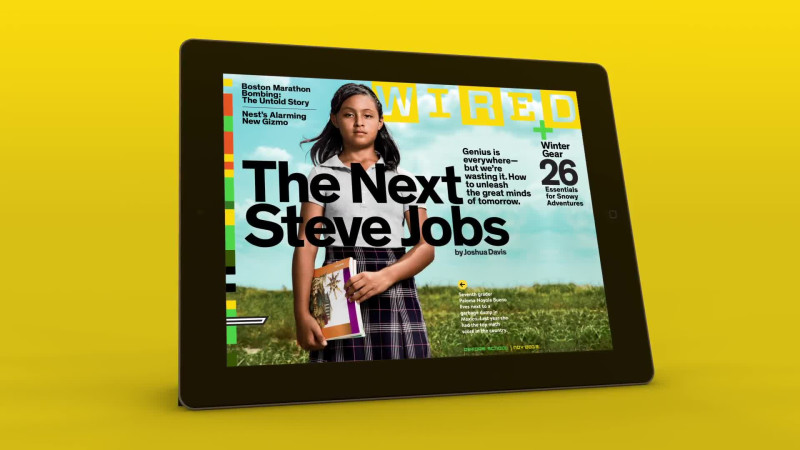About Kimberly Bryant
Kimberly Bryant is a Biotechnology/Engineering professional who has spent a decade in the Biotechnology, Pharmaceutical, and Manufacturing industry. She founded Black Girls Code in April 2011 as a way to close the digital divide for girls of color. The organization’s mission is “to introduce programming and technology to a new generation of coders, coders who will become the builders of technological innovation and of their own futures.” The program focuses on introducing girls between the ages of 7 and 17 to robotics, video game design, app development, and computer programming.
Bryant was awarded the White House Champions of Change for Tech Inclusion award in July of 2013. The award is given to celebrate people in the U.S. “who are doing extraordinary things to expand technology opportunities for young learners—especially minorities, women and girls, and others from communities historically underserved or underrepresented in tech fields.”
Champika introduces Kimberly. Kimberly notes that they use the work done at the Media Lab a lot in their organization. She starts by showing us a clip from their summer camp in Oakland, CA. It was a mobile entrepreneurship camp where they used AppInventor.
What is Black Girls Code?
BGC is about giving girls tools and experience to code and make a change. Kimberly shows a recent cover of Wired magazine that asks whether the next Steve Jobs could be a girl of color. Kimberly says she is trying to change the image of what it means to be a “techie”. The field could be open and diverse. She shows a picture of young African American women and says that this is the future that they try to promote.

Kimberly describes how two years ago her 12-year-old was a heavy heavy gamer. Kimberly was annoyed from purchasing $60-70 games for her and her daughter would look at all the cheat codes and then she’d have to go buy more games. Kimberly sought some computer programming opportunities for her summer school. After a one-week summer camp at Stanford in 2011 her daughter’s whole perspective changed. But she reported back that she was one of three girls and the only girl of color at camp.
Kimberly describes that at the same time she was going through her own career transition. She worked as an engineer in the manufacturing, biotechnology and pharmaceutical industries. She was looking to do a healthcare start-up and started going to meetups in the Bay area. She would find that she was the only woman and only woman of color in the room. There are less women engineers than there were 20 years ago.
And yet there are so many tech opportunities especially in the Bay area. “If you can code you will never go hungry out there,” says Kimberly. Instead of starting her own firm, Kimberly decided to make the change that she wanted to see in the world. She figured she had about ten years to make a difference for her daughter to make her road a little bit easier.
Black Girls Code started in April 2011 focusing on girls ages 7-17. They held their first class in a small community of color in San Francisco. They ended up with twelve girls. They looked at everything and talked to everyone. They looked at robotics, Ruby, and many other things until they found Scratch. They originally thought they would focus on middle school girls. This is the age range where girls tend to opt out of STEM fields. But many parents brought their younger siblings to the informational meetings and asked if they could attend the class as well. What was interesting about the classes is that they 6-8-year-olds would blow past the older girls and really get into it. They are at an age where they are really open. That’s how we ended up serving the age range that we do.
Their mission is to work with girls to embrace the current tech marketplace as builders and creators by introducing them to skills in computer programming and technology. They want to grow to train 1 million girls by 2050 and become the “girl scouts” of technology.
Kimberly shows slides of important women from computing history: Ada Lovelace, Grace Hopper, the women that programmed ENIAC. In the 1960s women represented about 15% of the degrees in computer science. She shows a chart showing the number of women graduating with technical degress. Computer science is the only field where women graduates have decreased since the 1980s. She then shows how women comprise a good amount of the AP test takers in high school, however women of color comprise only 1%.
She notes that in some countries like India the numbers are better. She has traveled to London, Ireland and Malaysia and many places have a hard time getting women into computer science.
But why does coding matter? Kimberly says, “If all software’s created by men then we miss out on the perspective of 50% of the population. Computing jobs are some of the fastest growing sector in the country.” Women and minorities are consistently early adopters of technologies including social media and gaming. But they are consistently absent from the actual creation of these technologies.
At BGC they see this time and again with the apps the girls create. The girls’ always outpace their mentors for the ideas that they have for what they can create. There is a high capacity for using this as a creative tool for these girls.
The BGC Solution
The BGC way is to deliver technology-centered workshops and classes for girls from underrepresented communities. They develop culturally-rich curriculum. This means they take a tool like Scratch and integrate it into their communities and their lives. They integrate entrepreneurship as well in the sense that they create a project rather than just learning how to use a tool. They additionally provide access to female role models. They consider themselves part of the larger learn to code movement which includes CoderDojo, girls learning code, CODE, and Codecademy.
The BGC Model
BGC is a chapter model so there are chapters in multiple cities. Currently they have chapters in eight cities around the country. They have one international chapter in Johannesburg. Overall they have reached about 2000 girls in two years. They are hoping to double that in the next two years by adding chapters in the US and in Africa.
Their program model includes culturally rich environment, foundational CS curriculum infused with culturally sensitive elements (she calls this their secret sauce), a strong mentorship focus, and parental education. On the latter, she describes how the parents would attend the workshops and wouldn’t leave because they would want to learn the curriculum as well. BGC decided to run parallel workshops for parents in conjunction with the student workshops. These include technical talks and even teaching them how to code. This year they used GameMaker to teach them how to make a game. The parental workshops are one of the most touching aspects of the program. They get very emotional about getting their kids involved. Finally, corporate partnerships are very important to their model.
Kimberly describes the challenges of reaching kids at high school age and the lack of CS curriculum in high schools. She took her daughter around the Bay area and found that most schools didn’t teach computer programming. They ended up at the single high school that teaches robotics and had a computer science AP program. They can only do so much in the after-school setting. CS should be counted as a science and teachers should teach CS in the schools. Their goal for next year is to use what they have learned in the afterschool setting and then apply that at the high school level.
She shows slides of what they do: Build a Webpage in a Day, National STEM Video Game Challenge, iPad Film School, Game Design, Mobile App Development, Ruby, Python and Web Design Workshops. In the workshop they do “pair programming” and team projects. They have found that a ratio of 2:1 or 3:1 of students to teachers is important for students to get personal attention.
She shows how they teach programming. They make analogies with human language. They show examples of how code translates into visual interfaces. She shows the class they have recently been teaching using AppInventor which they start with kids as young as 7. They also use Scratch and have found that it works best with kids 10 and up. They think it’s a great entry-level language for their students.
She shows some of the BGC success stories. A girl named Aita was well-recognized in her first class even though she initially didn’t think she knew much about technology. Two years after her first class she was hired to teach web design and mobile app development to other middle school girls at her school. She says that this is typical – after two years they are seeing amazing growth by the girls.
Kimberly ends with the proverb:
“When you teach a woman, you teach a nation.”
– African proverb
Q & A
Q: Can you give me examples of the culturally sensitive elements since you said that was your secret sauce?
Kimberly: The easiest example is driving the curriculum around a purpose. We don’t just create a web page to create a web page. We focus narrowly on building something that focuses on our community. Some of our team building exercises we do as well. We train our teachers to interface and interact with our girls. We want to make sure how to talk to the kids and engage the kids in class. One of the things we are hoping to do next year is to create some research around this culturally sensitive
Q: What does it take for a group to become a chapter?
Kimberly: Right now we have 50-60 cities that are interested. We are working on making specific guidelines. We are looking at ways of sustaining chapters and making it easily replicable. Boston is on our list but probably won’t start till summer of next year.
Q: Have you thought about or do you have ambitions to change the larger tech culture since, in many cases, it’s still very male?
Kimberly: We are thinking about how to approach traditional tech culture. We want to expose them to it so that they see what it is and what it’s about. I feel like it probably won’t change significantly until women are there. We are looking at some of the things they are doing at Carnegie Mellon as well around recruiting more female students.
Q: How do you encourage students to continue coding especially in low resource environments?
Kimberly: We give them kits that have Scratch. Another thing we are looking at is having online modules as well.
Q: How many staff members do you have?
Kimberly: We have two full time staff members and then teams of volunteers in every city.
Q: How do you celebrate the successes of the girls?
Kimberly: We are looking at creating a badge system so that we can track it. We want the girls to celebrate their success and build a history and portfolio of work.
Live-blogged by Catherine D’Ignazio.
